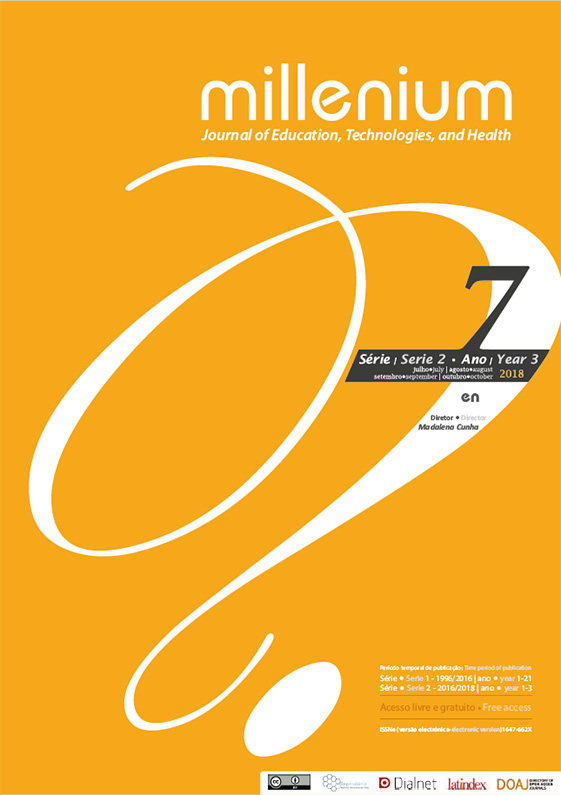Accesibilidad, patrimonio y proyecto. Re-architectures para todos
DOI:
https://doi.org/10.29352/mill0207.09.00183Palabras clave:
Accesibilidad, Patrimonio Cultural, Proyecto Arquitectónico, Aprendizaje, Percepción sensorialResumen
Introducción: Proyectar para poner al Patrimonio Cultural en nuevos ciclos de vida requiere que sea dotado de nuevas funcionalidades, conseguir confort y seguridad, y también mejorar las condiciones de su uso por parte de todas las personas. En nuestros tiempos esta última cuestión, la accesibilidad, debe de ser un requisito básico de carácter transversal que tiene que estar presente en el proceso del proyecto desde el principio hasta el fin.
Objetivos: En la enseñanza de Arquitectura las cuestiones de accesibilidad se suelen tratar como temas colaterales, o como materias auxiliares; sin embargo si se consideran como auténtica sustancia proyectual probablemente se consiga un mayor compromiso de los futuros profesionales.
Métodos: Análisis del estado de la cuestión a partir de varios estudios publicados y de las problemáticas de su aplicación. También se analizaron las experiencias de los estudiantes en su aprendizaje. En este sentido se trabajó en la intervención en la ruinas del monasterio de San Antón en Castrogeriz, en el Camino de Santiago.
Resultados: Cuando la accesibilidad se considera desde el principio del proyecto, como un requisito más, se obtienen mejores soluciones arquitectónicas.
Conclusiones: Profundizar en el aprendizaje de las problemáticas del uso por todas las personas de nuestro Patrimonio Cultural permite ahondar en uno de los ingredientes más sustanciales de la arquitectura: su percepción sensorial. Desde las reflexiones alrededor de los trabajos en Castrogeriz se pueden extraer algunas ideas que contribuyan al debate arquitectónico sobre la accesibilidad.
Descargas
Citas
Ávila Cobos, B. (2015) Master’s Project: “El Arquitecto como facilitador de la orientación espacial para todas las personas en los espacios que diseña. Factores” *The Architect as a facilitator of special orientation for all people in the spaces he/she designs. Factors], Universidad de Jaén.
Fänge, A., & Iwarsson, S. (2007). Challenges in the development of strategies for housing adaptation evaluations. Scandinavian Journal of Occupational Therapy, 14(3), 140-149. https://doi.org/10.1080/11038120600840150
Garcés Desmaison, M. A. (2014). Accesibilidad y patrimonio comentarios sobre la norma y los monumentos = Accesibility and Heritage Monuments and Standard Compliance. Revista Electrónica ReCoPar, 7, 11-21. Retrieved from: http://polired.upm.es/index.php/recopar/article/view/2216
Ibáñez Montoya, J.; Trovato, G., & Díez de Pablo, A. (2010). Lugares intermedios de accesibilidad: metodología integrada de diagnóstico y solución de barreras de accesibilidad física y criterios de comprensión e identificación a todas las escalas del patrimonio. ACE: Architecture, City and Environment, 5(13), 111-126. https://doi.org/10.5821/ace.v5i13.2495
Iwarsson, S., & Stähl, A. (2003). Accessibility, usability and universal design—positioning and definition of concepts describing person-environment relationships. Disability and Rehabilitation, 25(2), 57-66. https://doi.org/10.1080/dre.25.2.57.66
Juncà Ubierna, J. A. (2011). Accesibilidad Universal al Patrimonio Cultural: Fundamentos, criterios y pautas. Madrid: Ministerio de Sanidad, Política Social e Igualdad. Real Patronato sobre Discapacidad. Retrieved from: http://hdl.handle.net/11181/3292
“Law 51/2003 (2 December), de igualdad de oportunidades, no discriminación y accesibilidad universal de las personas con discapacidad” «BOE» no. 289 (3 December 2003), Reference: BOE-A-2003-22066. Article 2, p. 8.
Mace, R., Hardie, G.J., & Place, J.P. (1990). Accessible, Adaptable and Universal Design. Fact Sheet Nº 6. Raleigh: North Carolina State University, Center for Universal Design. Retrieved from: https://projects.ncsu.edu/design/cud/pubs_p/docs/Fact%20Sheet%206.pdf
Moral Ávila del, C. (2011). Accesibilidad al patrimonio histórico protegido. In Accesibilidad Universal y Diseño para Todos: Arquitectura y Urbanismo (pp.140-163), Madrid: Fundación ONCE y Fundación COAM. Retrieved from: https://dialnet.unirioja.es/servlet/articulo?codigo=3873178
Parrott, C. (1980). Access to Historic Buildings for the Disabled: Suggestions for Planning and Implementation. Washington, DC: U. S. Government Printing Office.
Pérez Bueno, L.C. (2011). Nuevo marco legislativo de la accesibilidad en España. Accesibilidad Universal y Diseño para Todos. Arquitectura y Urbanismo (pp. 234-243), Madrid: Fundación ONCE y Fundación COAM. Retrieved from: https://dialnet.unirioja.es/servlet/articulo?codigo=3873199
Puga González, M..D., & Abellán García, A. (2004). El proceso de discapacidad. Un análisis de la Encuesta sobre discapacidades, deficiencias y estado de salud. Alcobendas, Madrid: Fundación Pfizer. Retrieved from: http://envejecimiento.csic.es/documentos/documentos/puga-discapacidad-01.pdf
Descargas
Publicado
Cómo citar
Número
Sección
Licencia
Los autores que sometan propuestas para esta revista estarán de acuerdo con los siguientes términos:
a) Los artículos serán publicados según la licencia Licença Creative Commons (CC BY 4.0), conforme el régimen open-access, sin cualquier coste para el autor o para el lector.
b) Los autores conservan los derechos de autor y conceden a la revista el derecho de la primera publicación, se permite la divulgación libre del trabajo, desde que sea correctamente atribuida la autoría y la publicación inicial en esta revista.
c) Los autores están autorización para firmar contratos adicionales separadamente, para la distribución no exclusiva de la versión del trabajo publicada en esta revista (ej.: publicar en un repositorio institucional o como capítulo de un libro), con reconocimiento de la autoría y publicación inicial e esta revista.
d) Los autores tienen permiso y son alentados a publicar y distribuir su trabajo on-line (ej.: en repositorios instituciones o en su página personal) ya que eso podrá generar alteraciones productivas, así como aumentar el impacto y la citación del trabajo publicado.
Documentos necesarios para la sumisión
Plantilla del artículo (formato editable)





